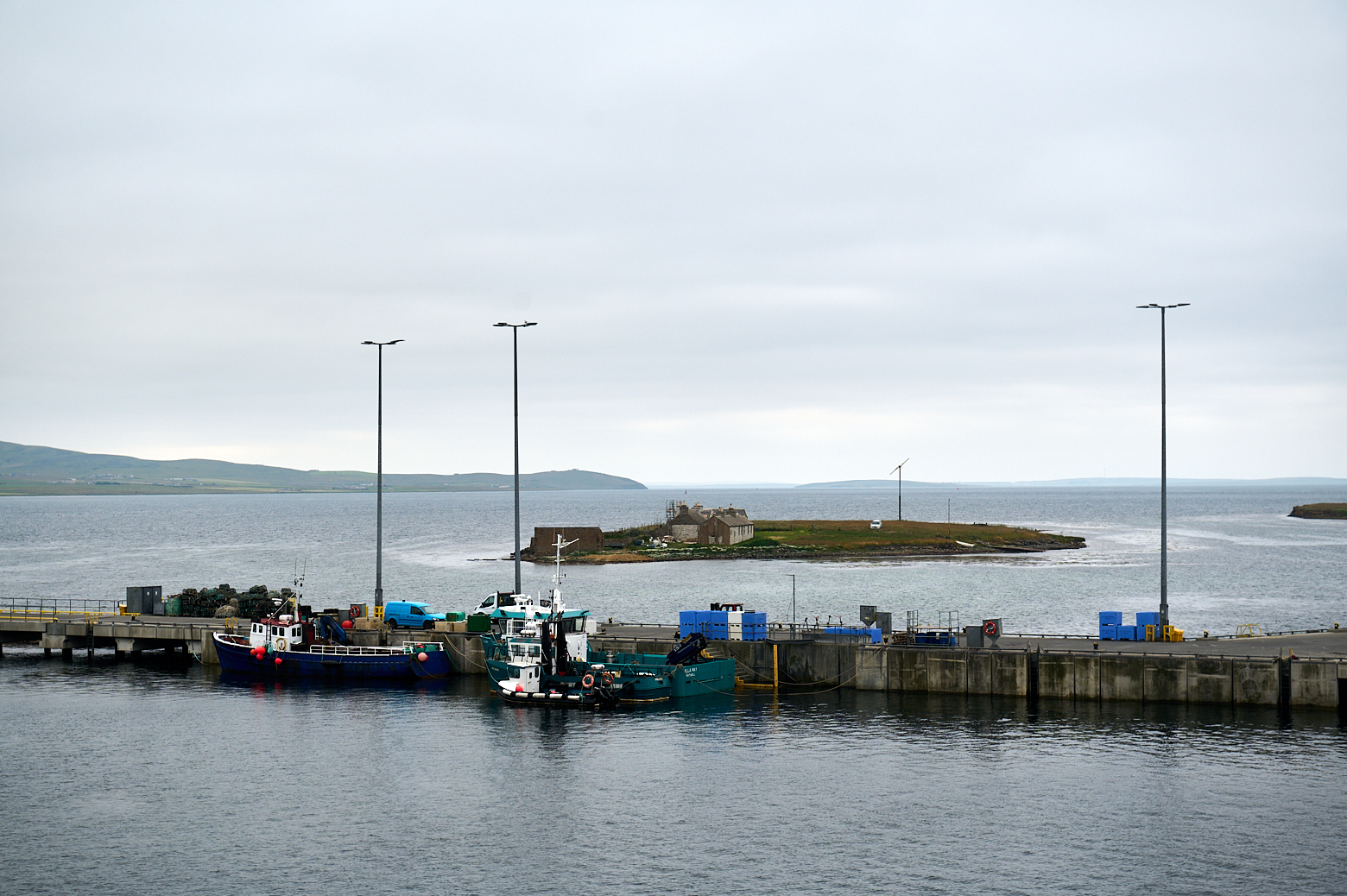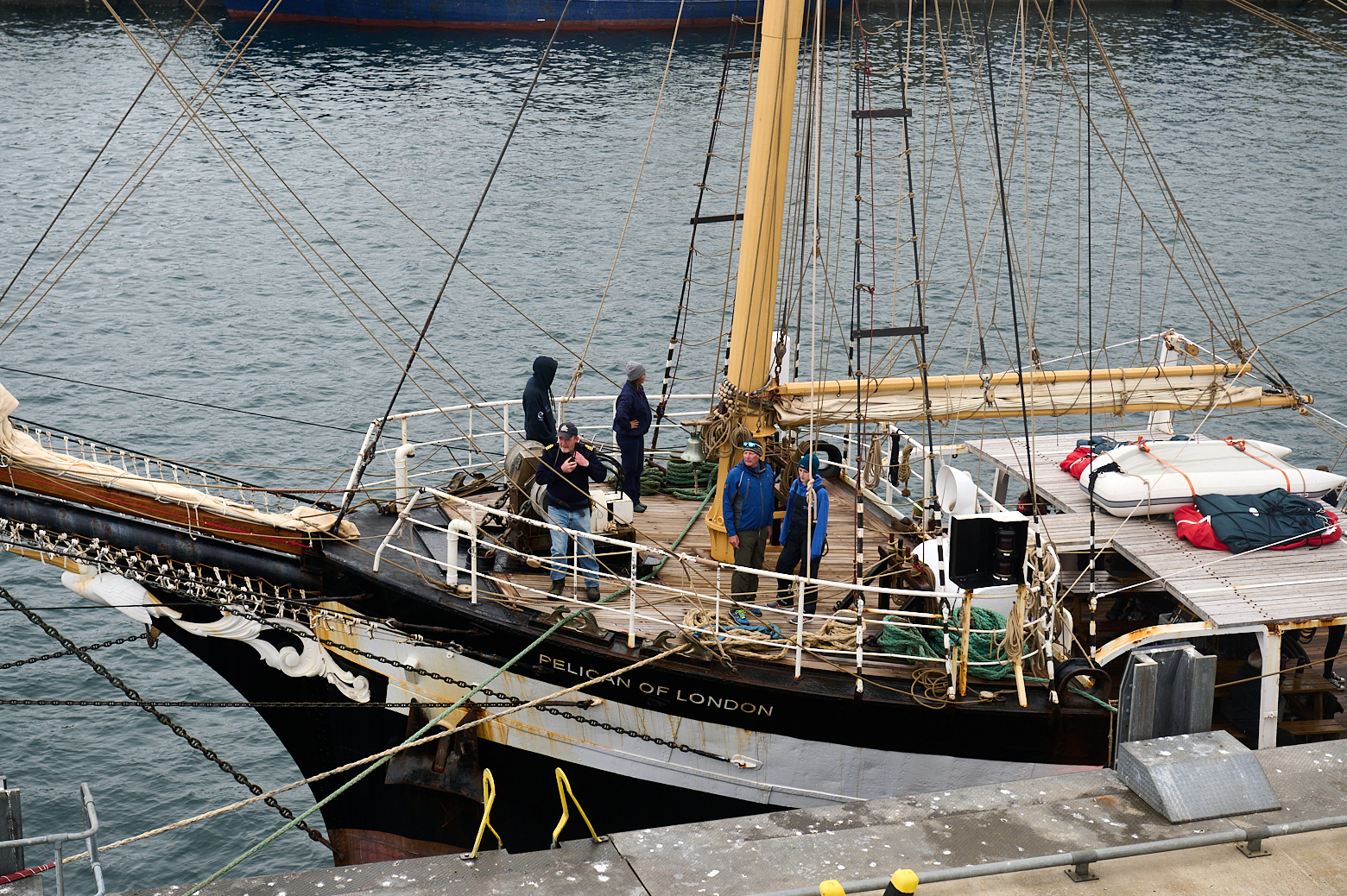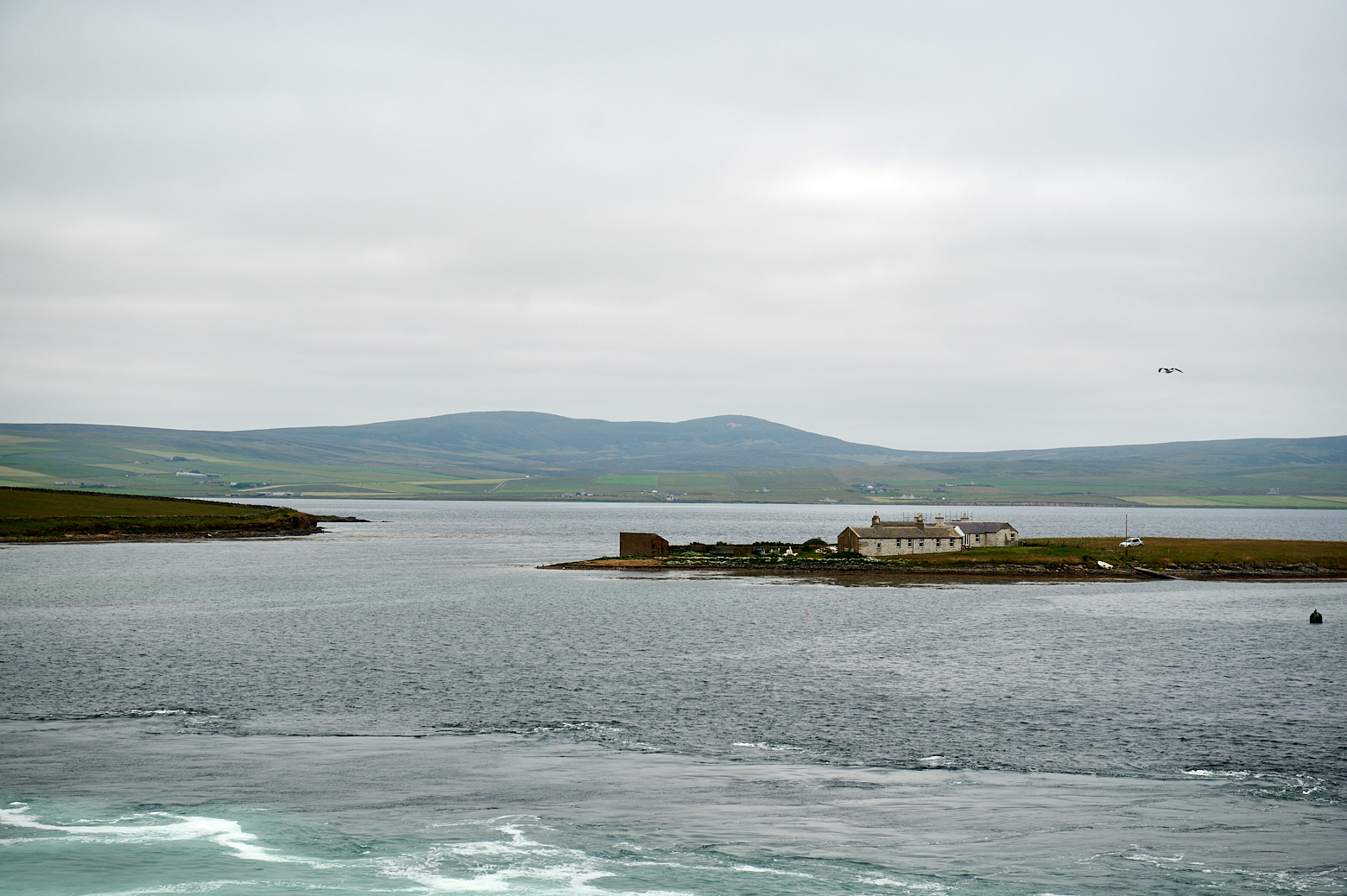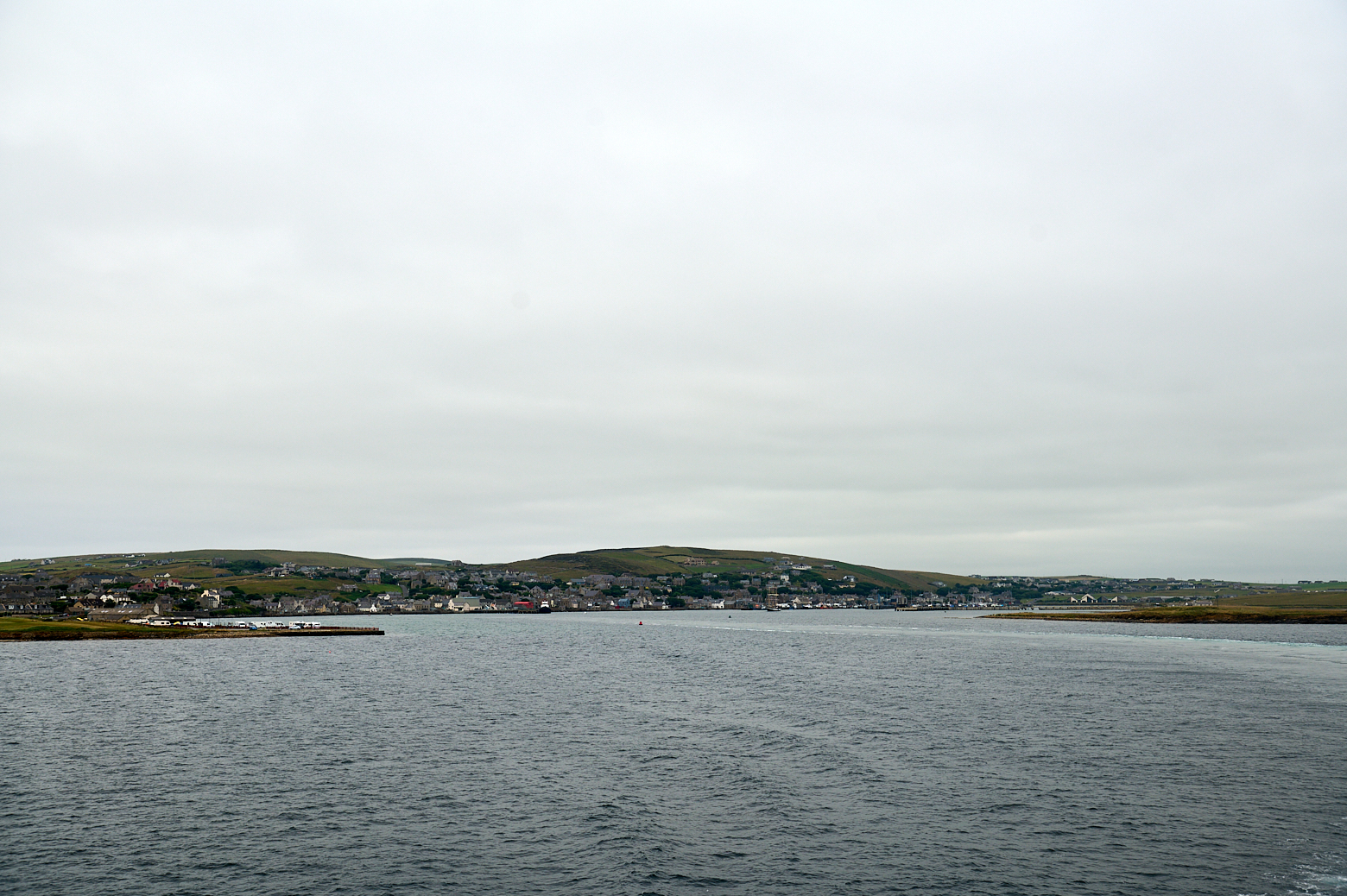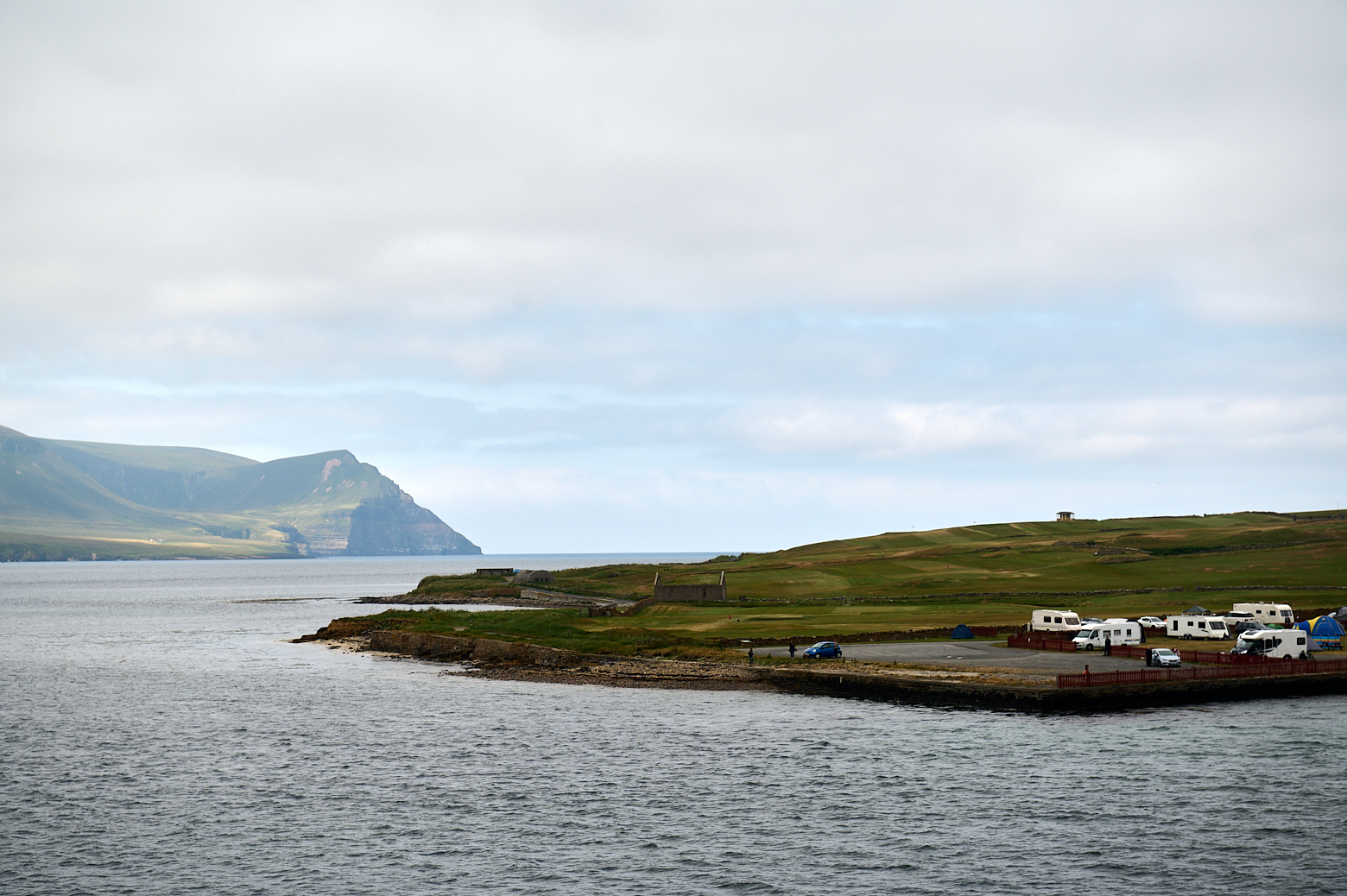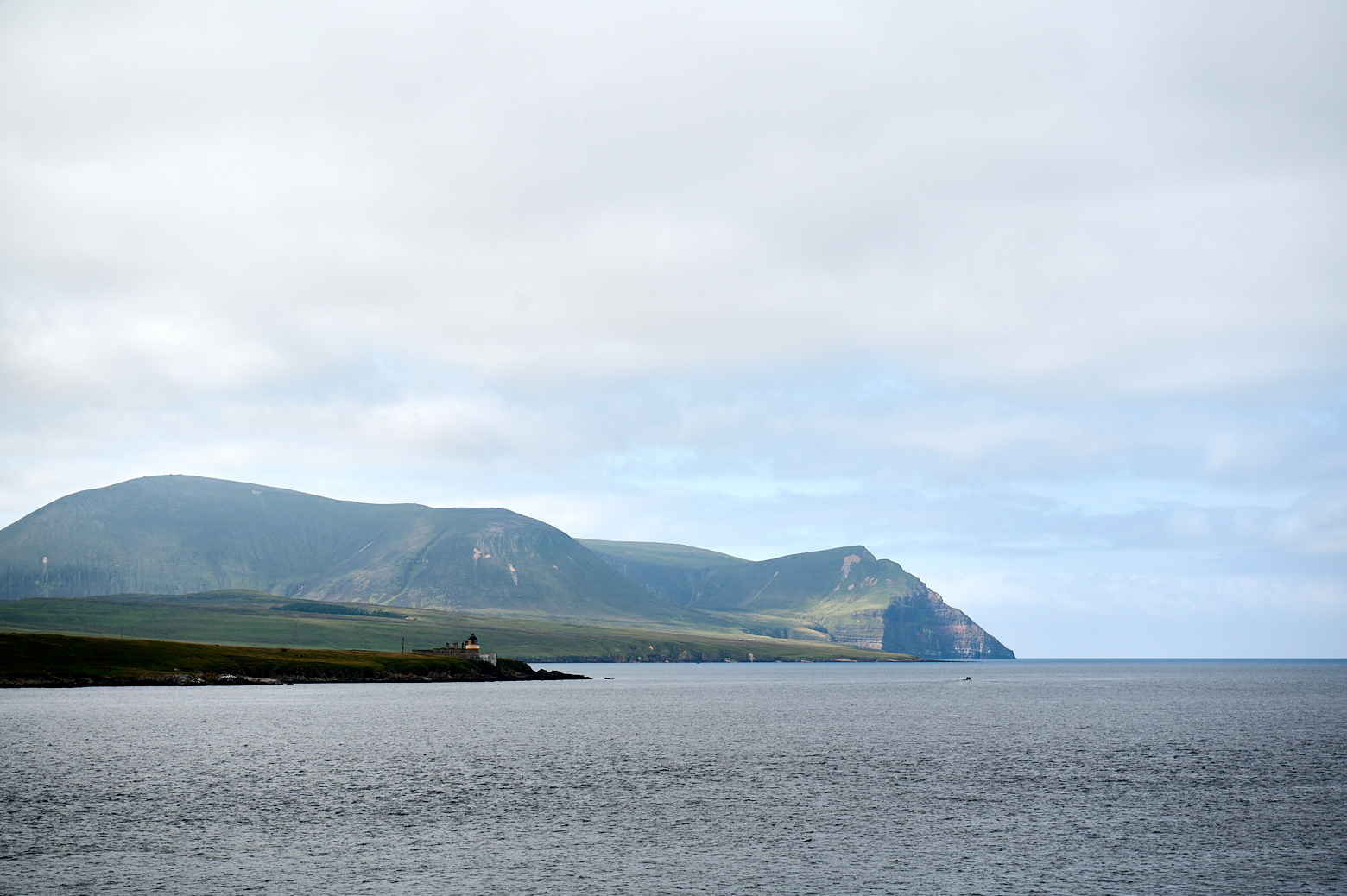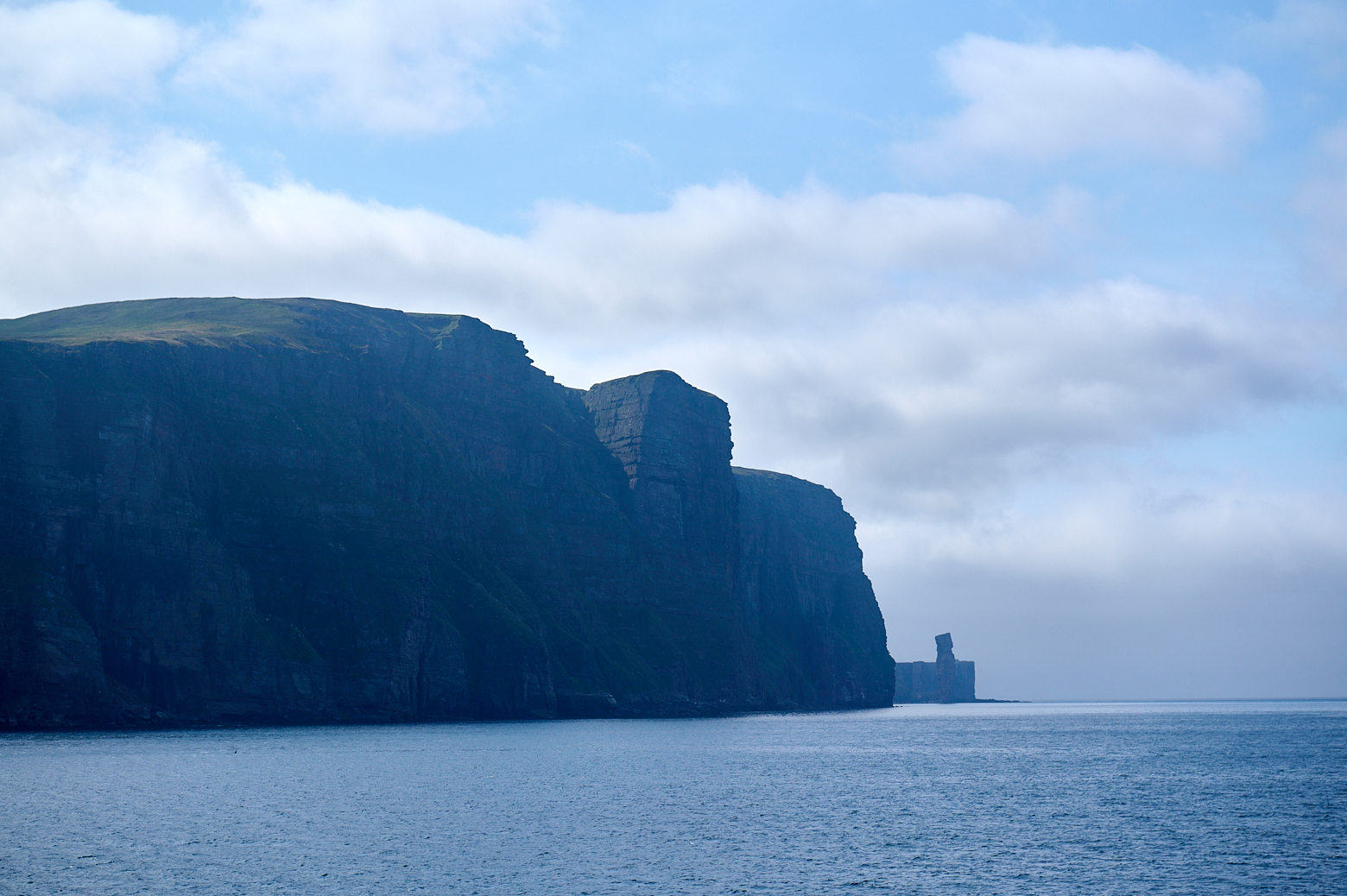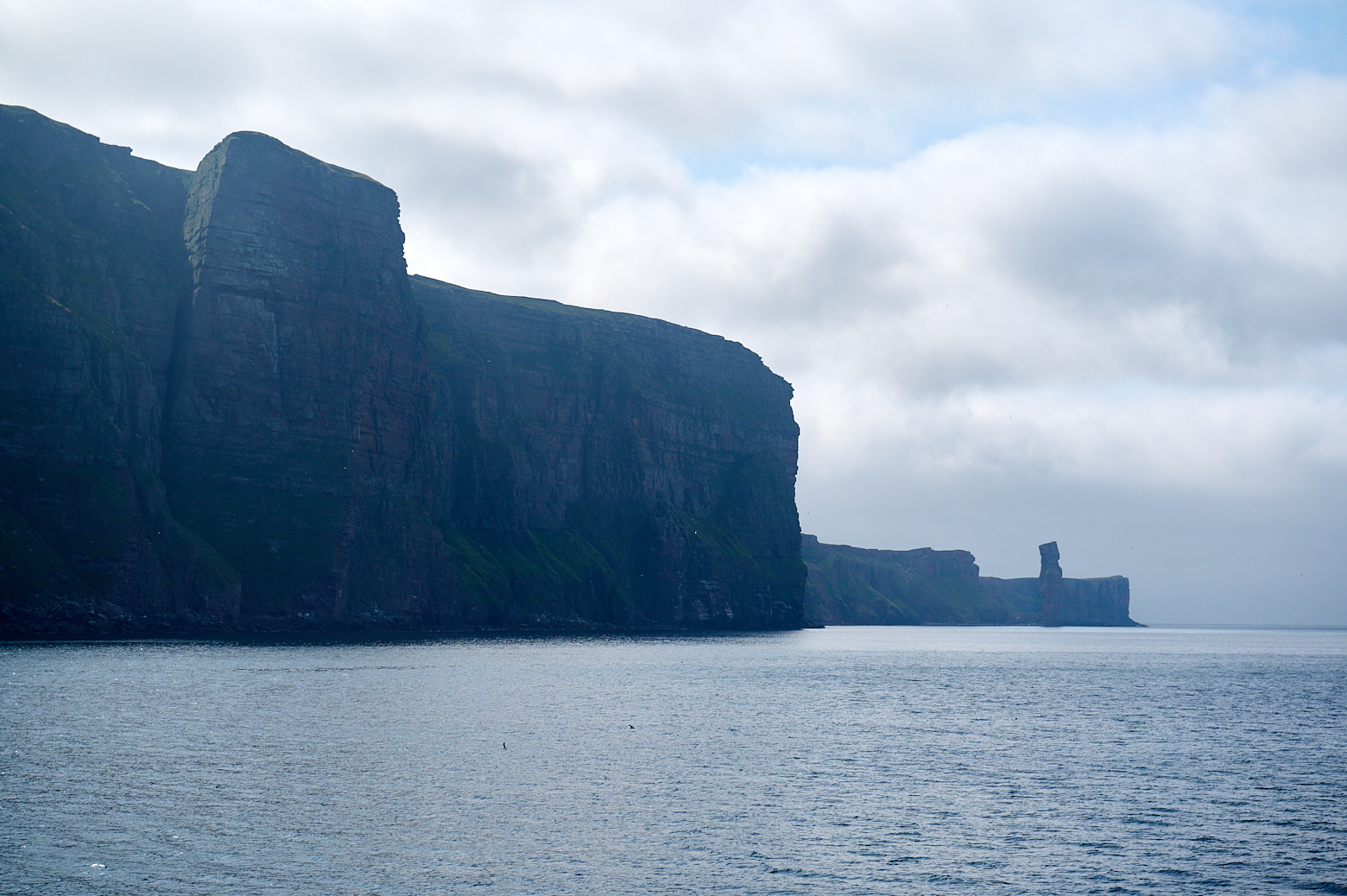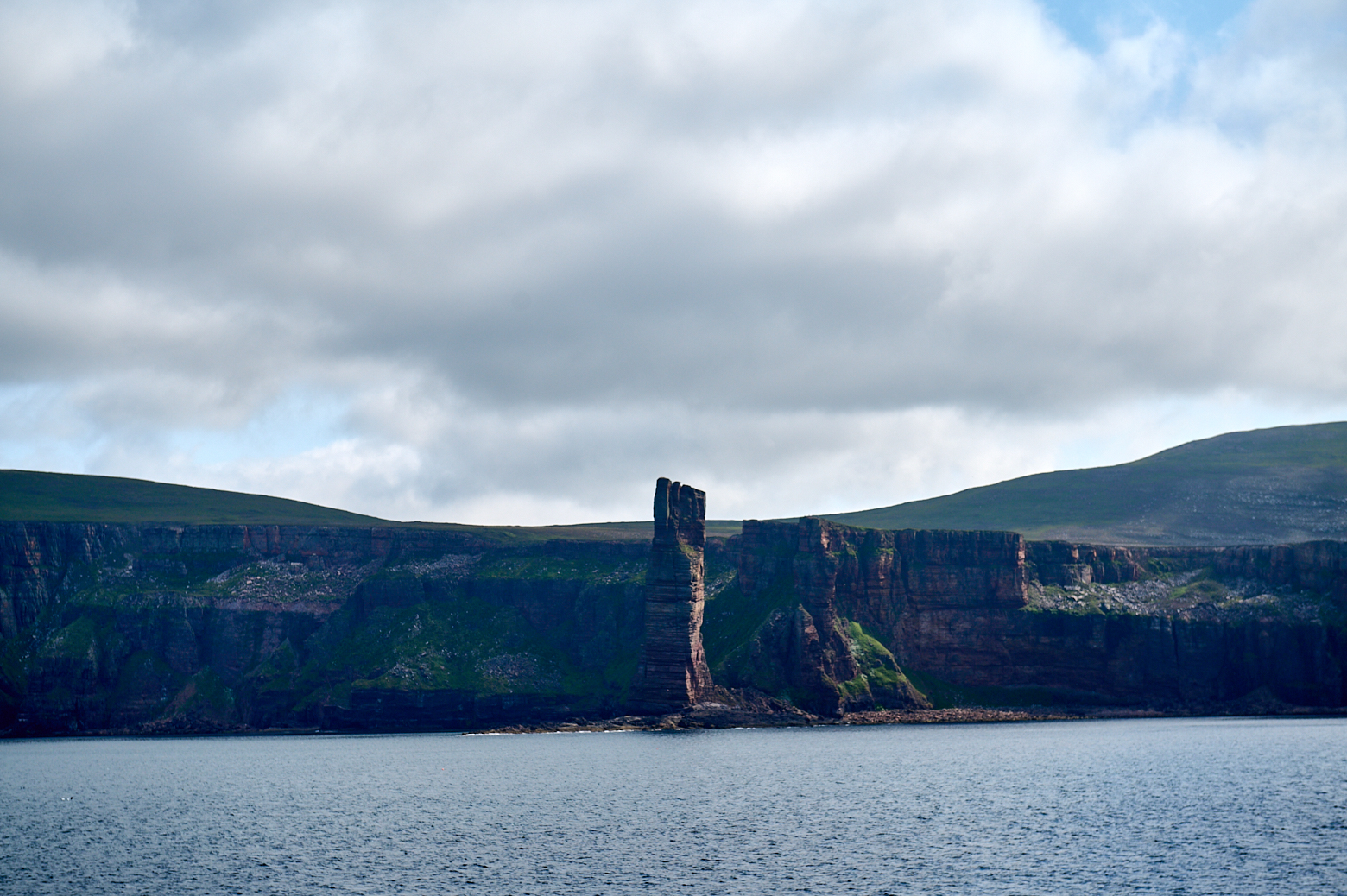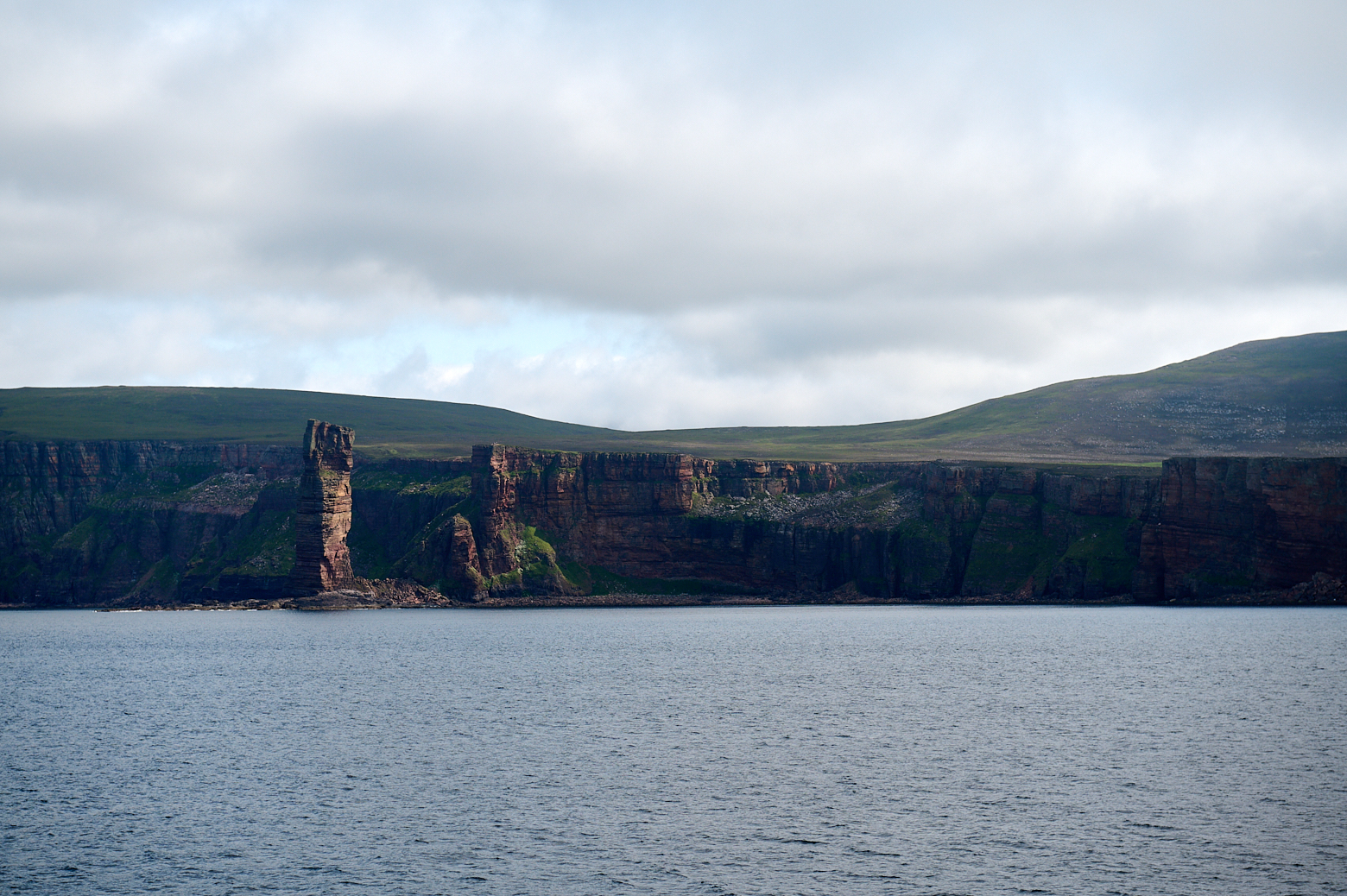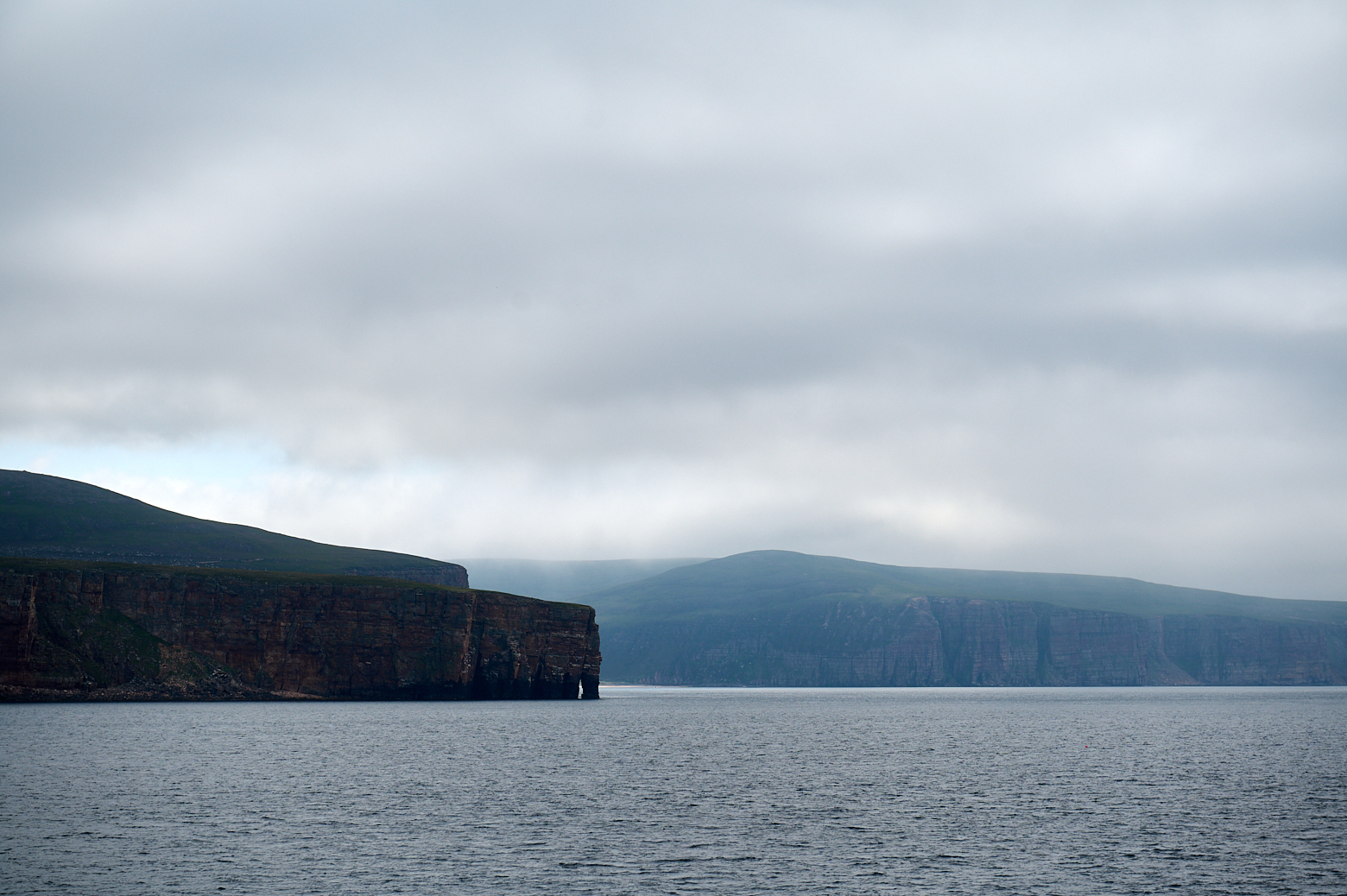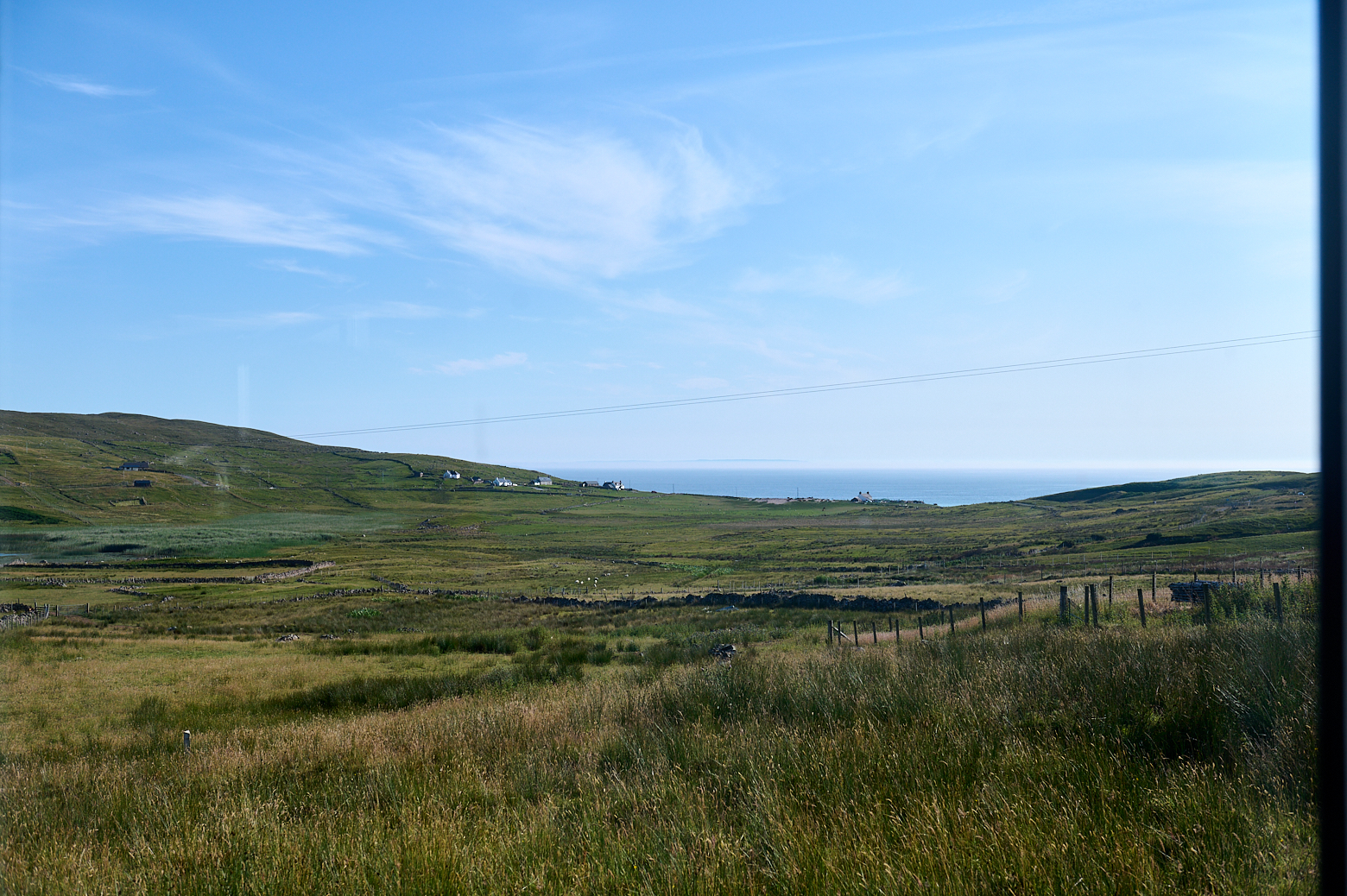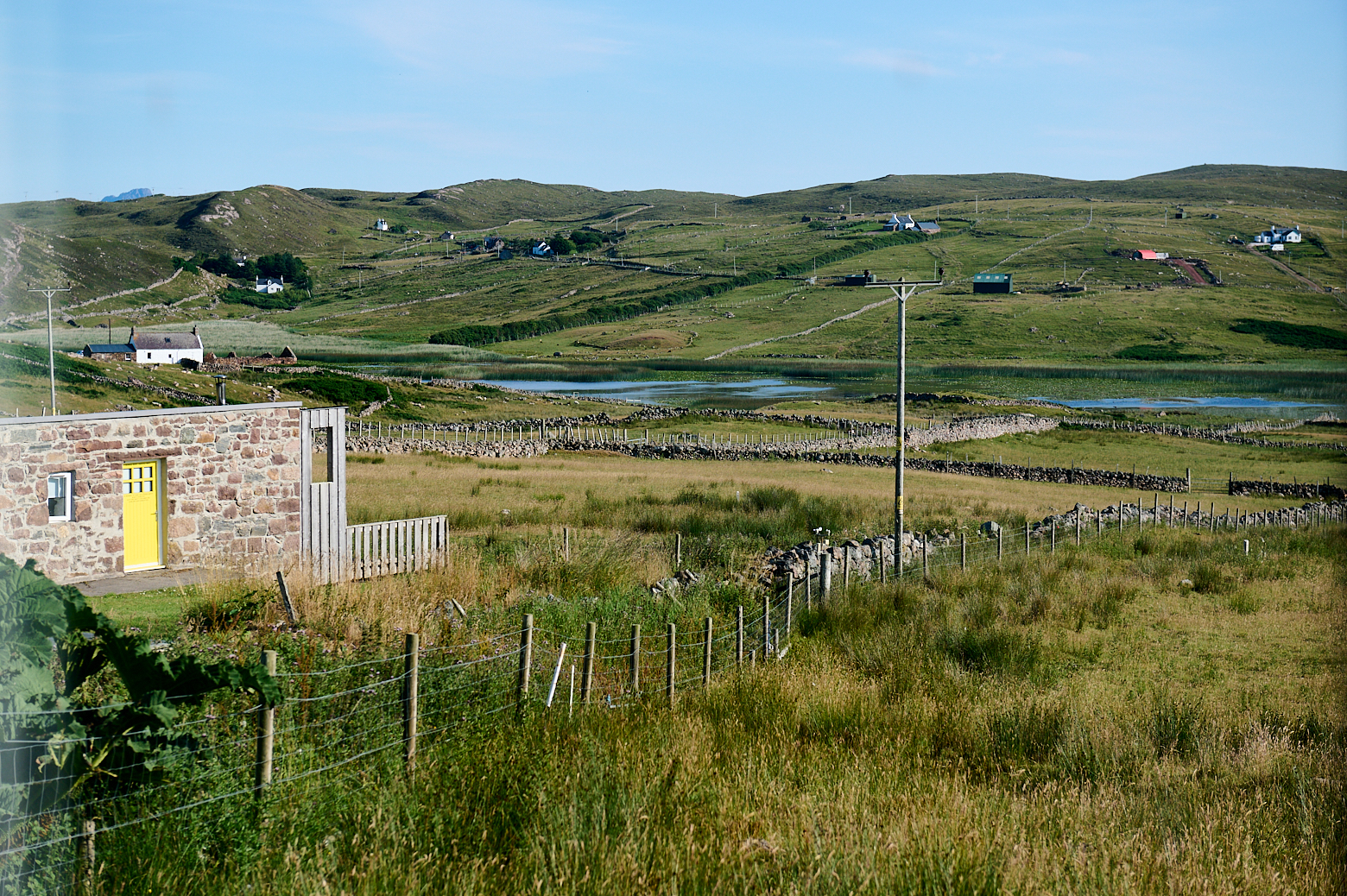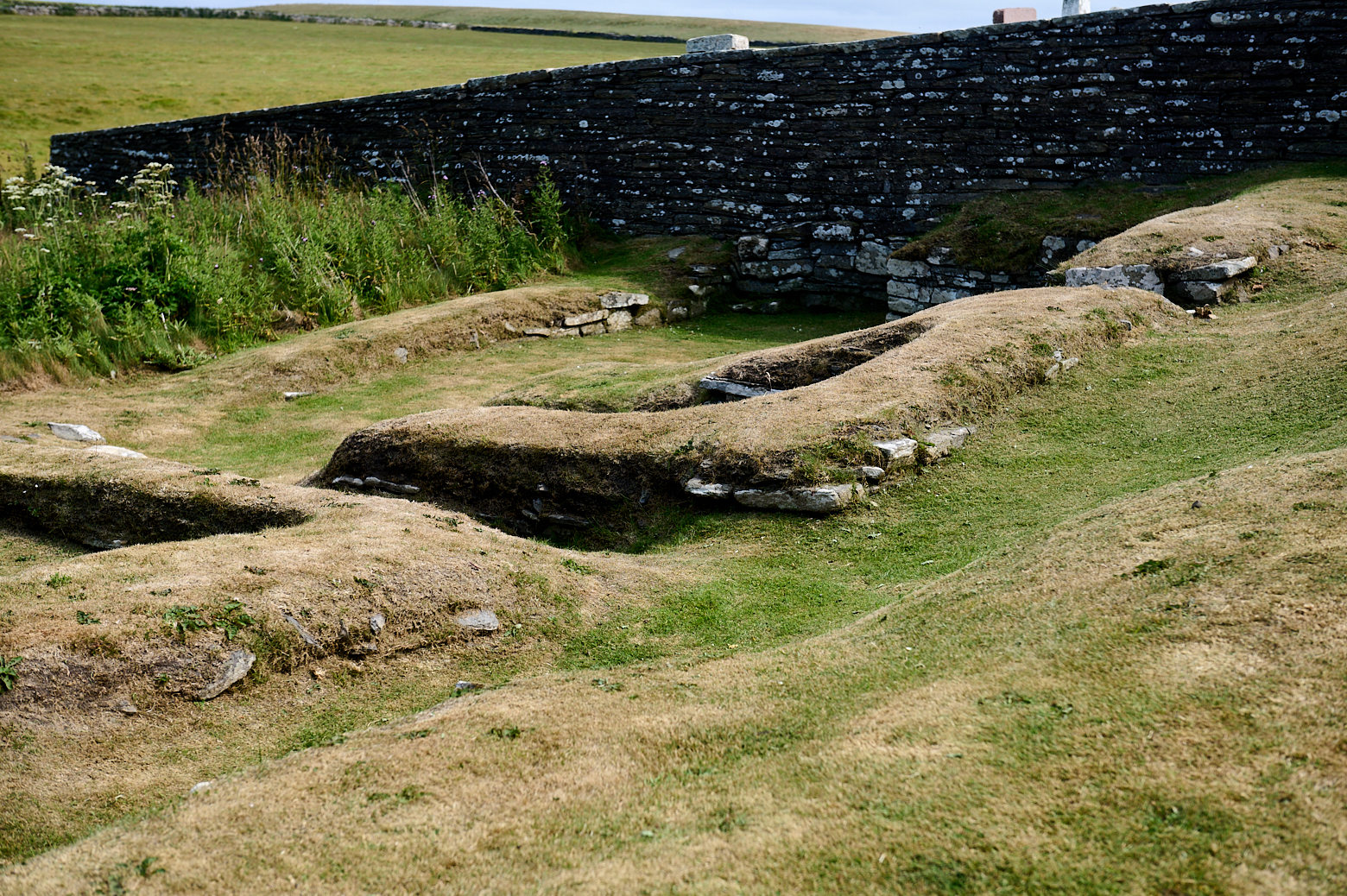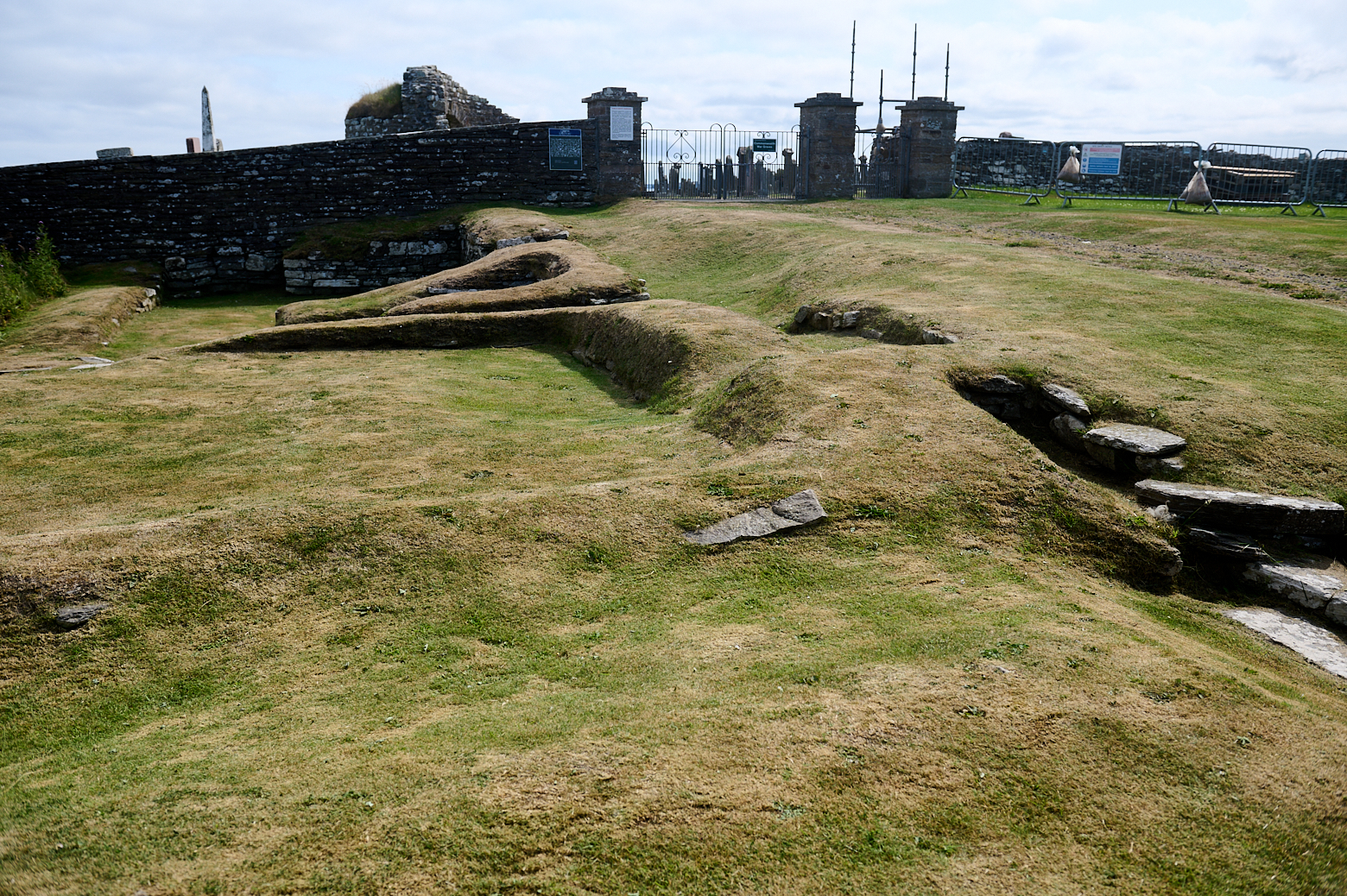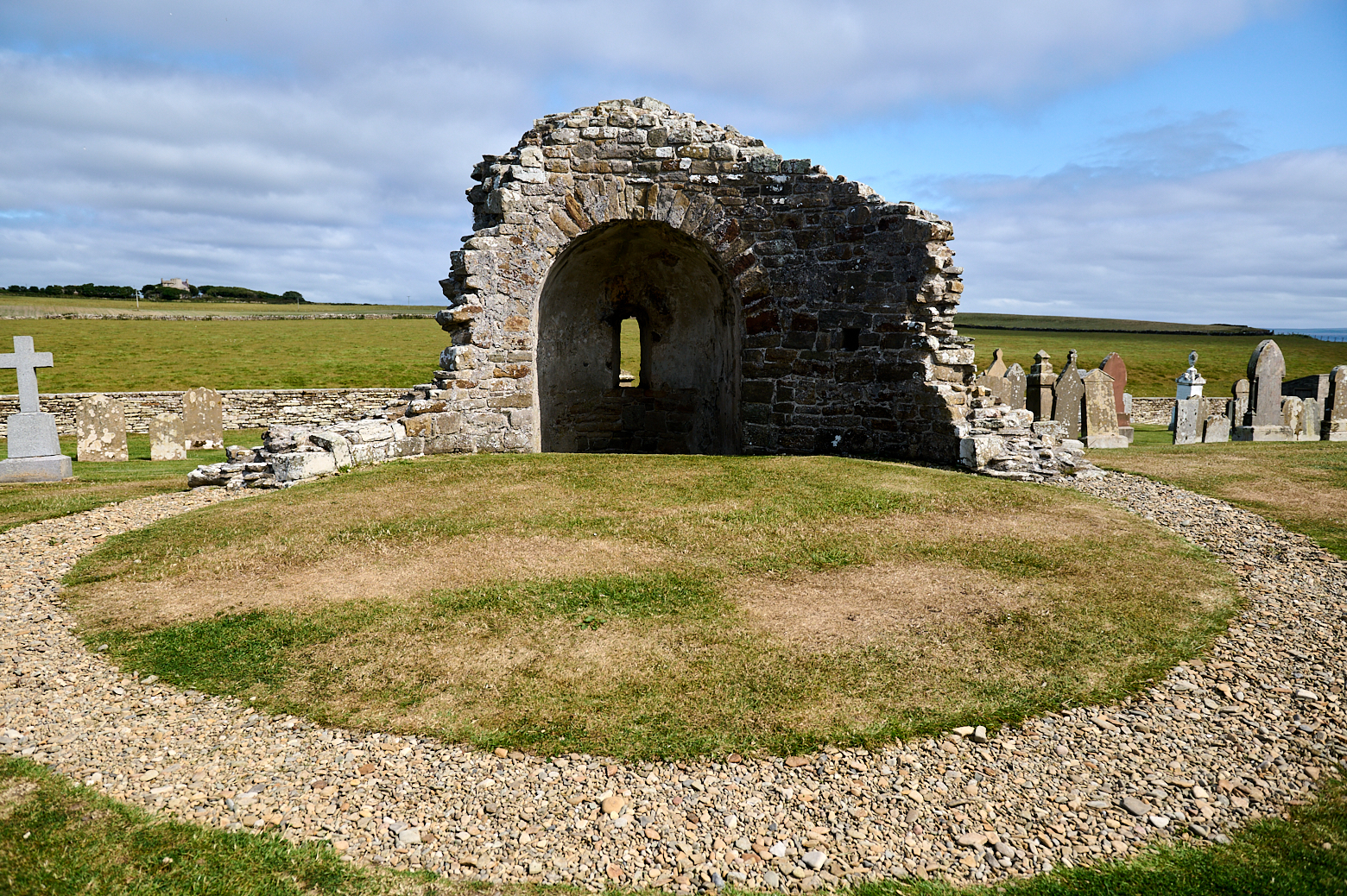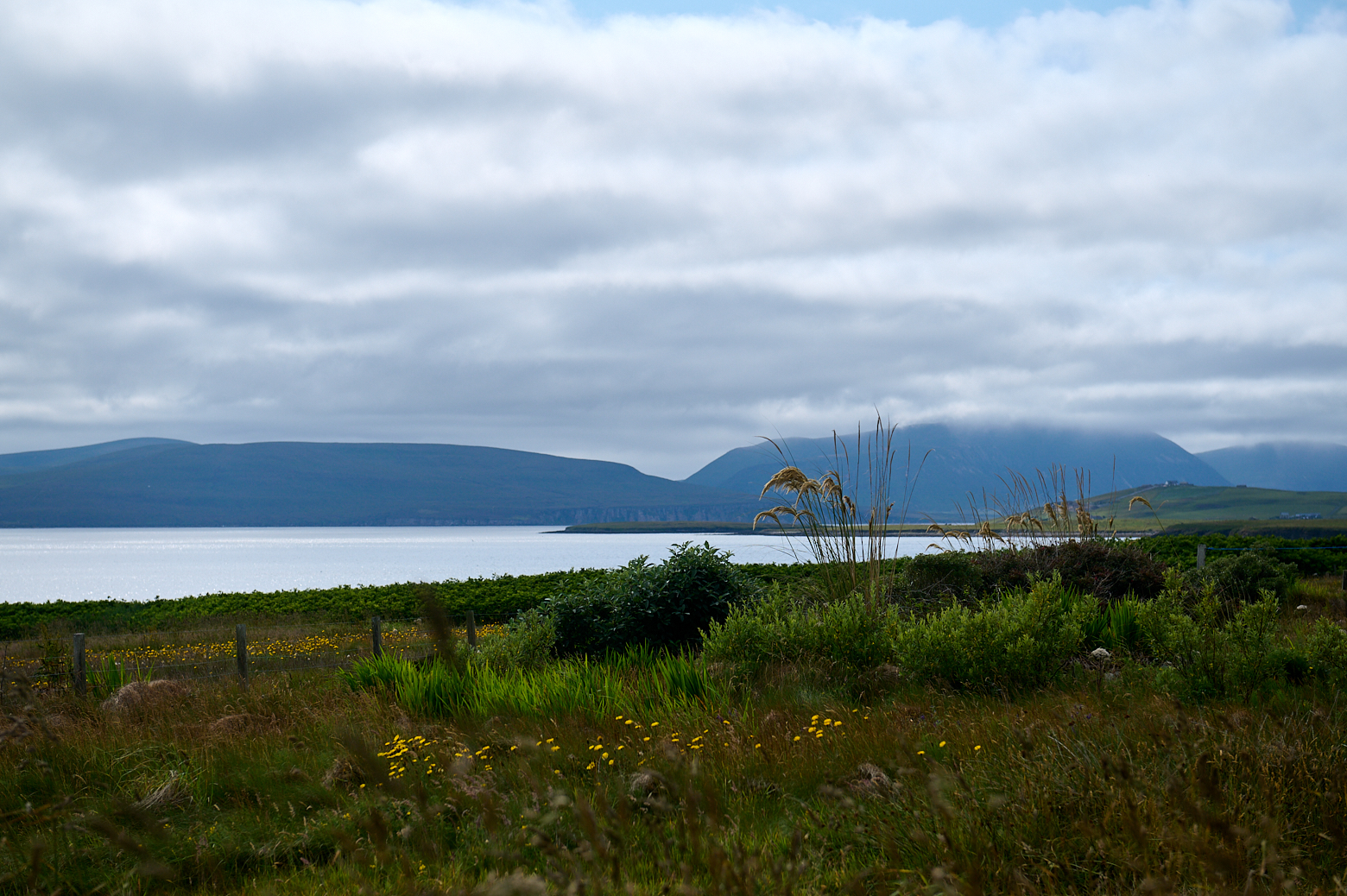It´s been a dreich day when I came back to the Ness of Brodgar, again – but I still wanted to take a closer look at the ongoing excavations of the Ness.
Ring of Brodgar

I parked the car at the Ring of Brodgar and started my walk along the Ness from there, how different it felt from the sunshine last time.

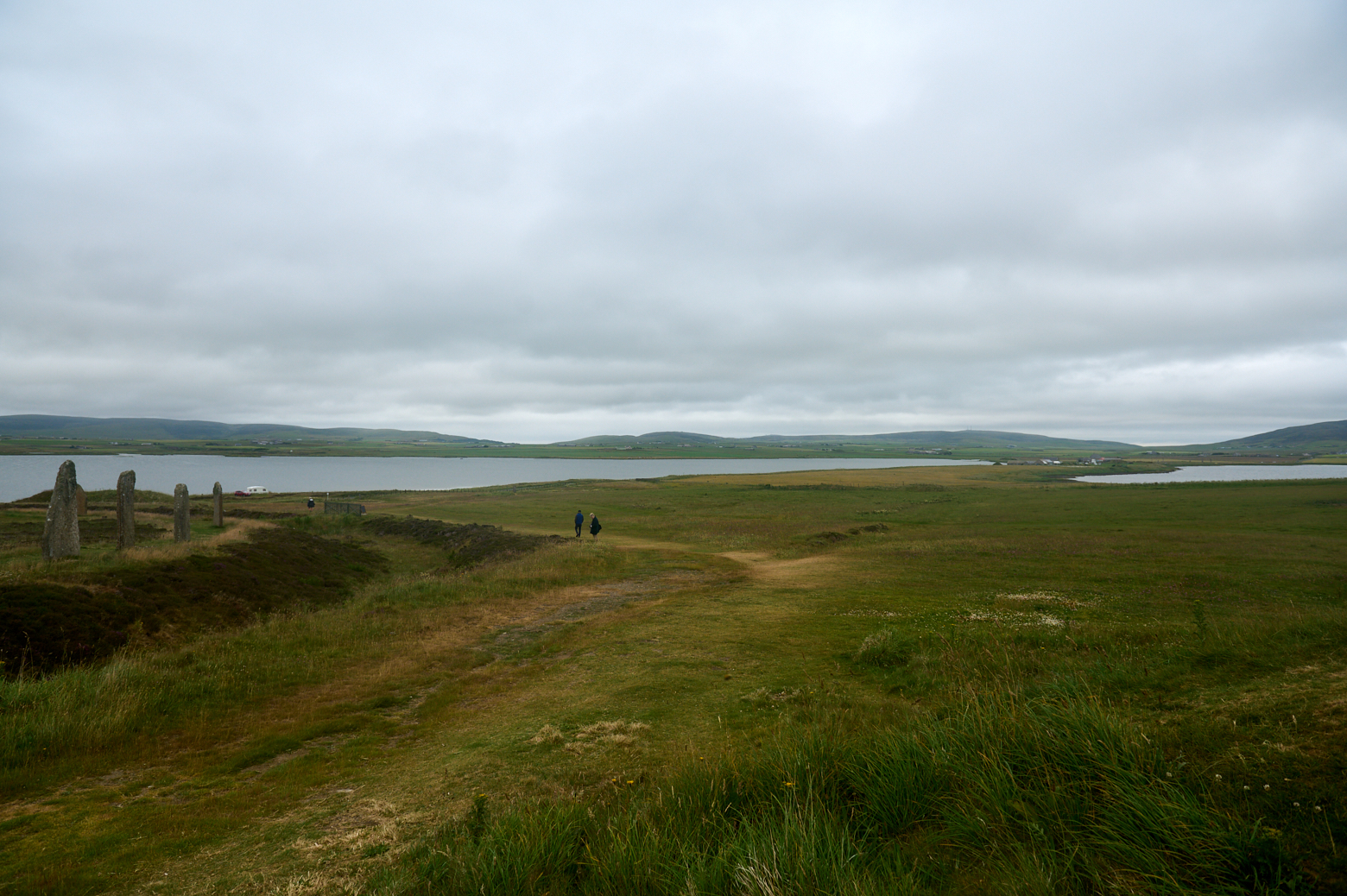
Path and view towards the Ness – it is just a short walk between the two lochs to the excavation site.
Lying at the centre of a massive natural “cauldron” ringed by hills, the Ness of Brodgar runs north-west to south-east and is therefore naturally (and roughly) aligned to the midwinter rising sun at midwinter and midsummer sunset. There is no better place than the Ness to view both. (Ness of Brodgar .co.uk)
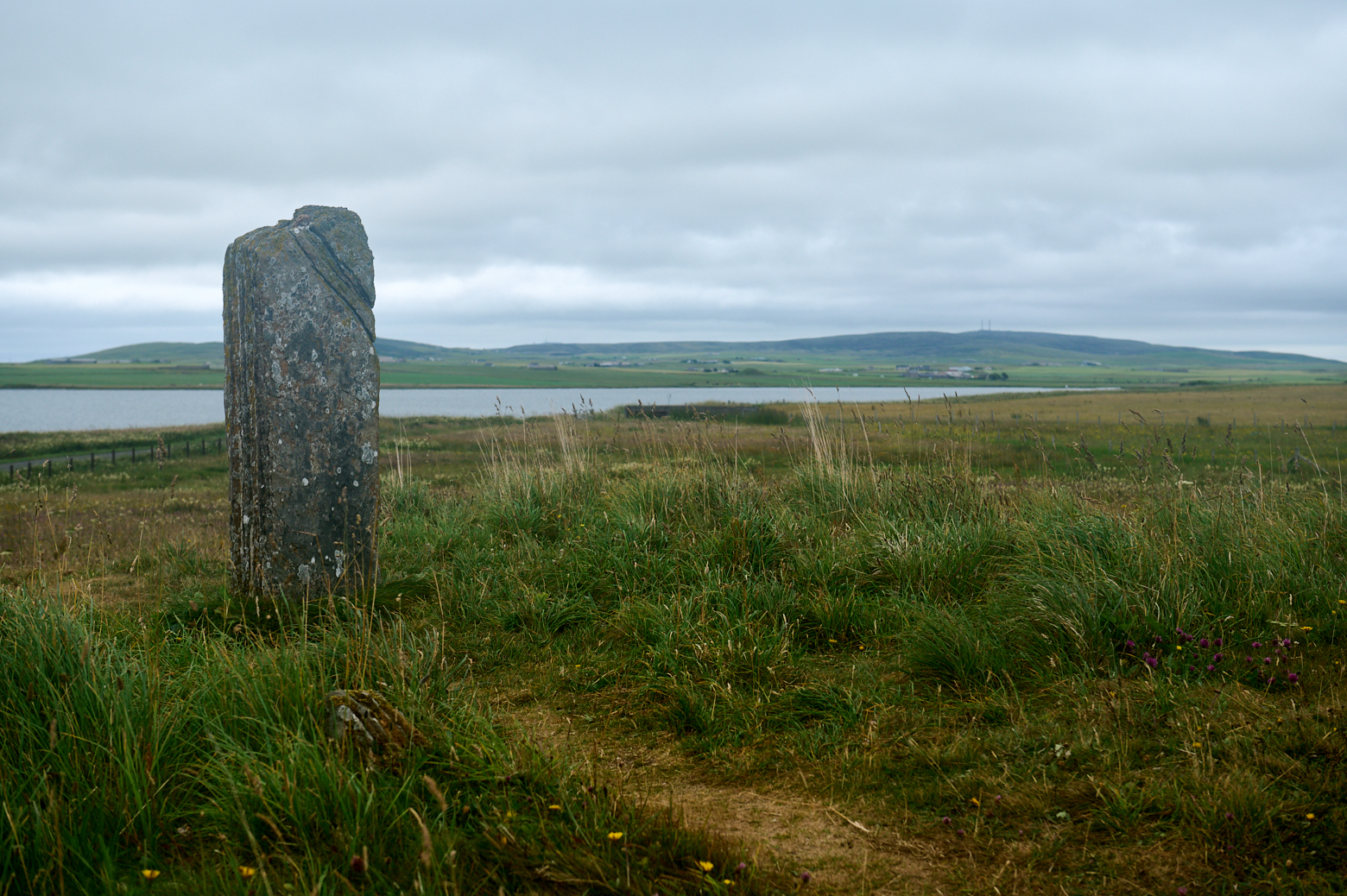
Passing the Comet Stone on the edge of the Ring of Brodgar.
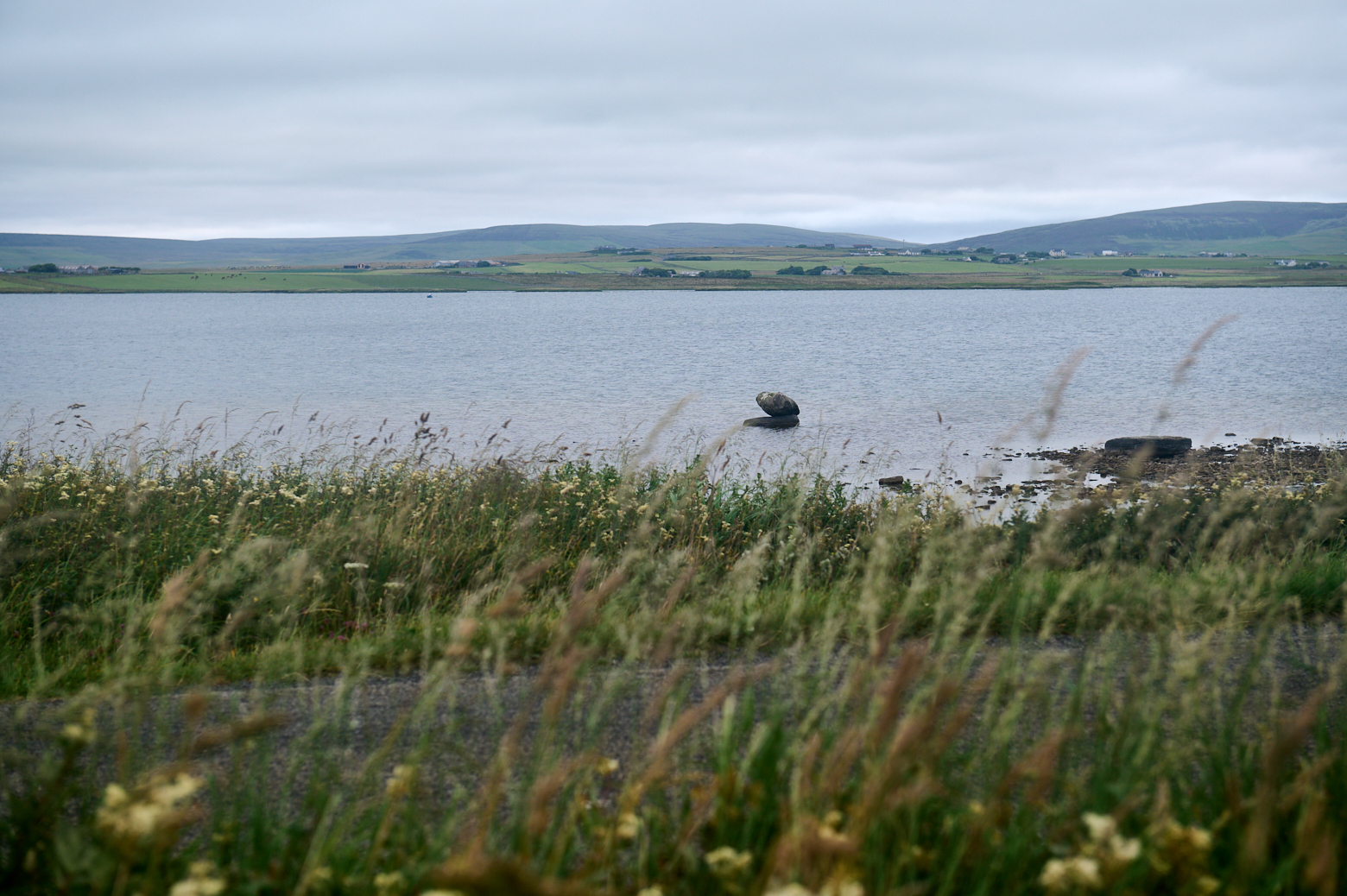
View towards the other side of Loch Harray.
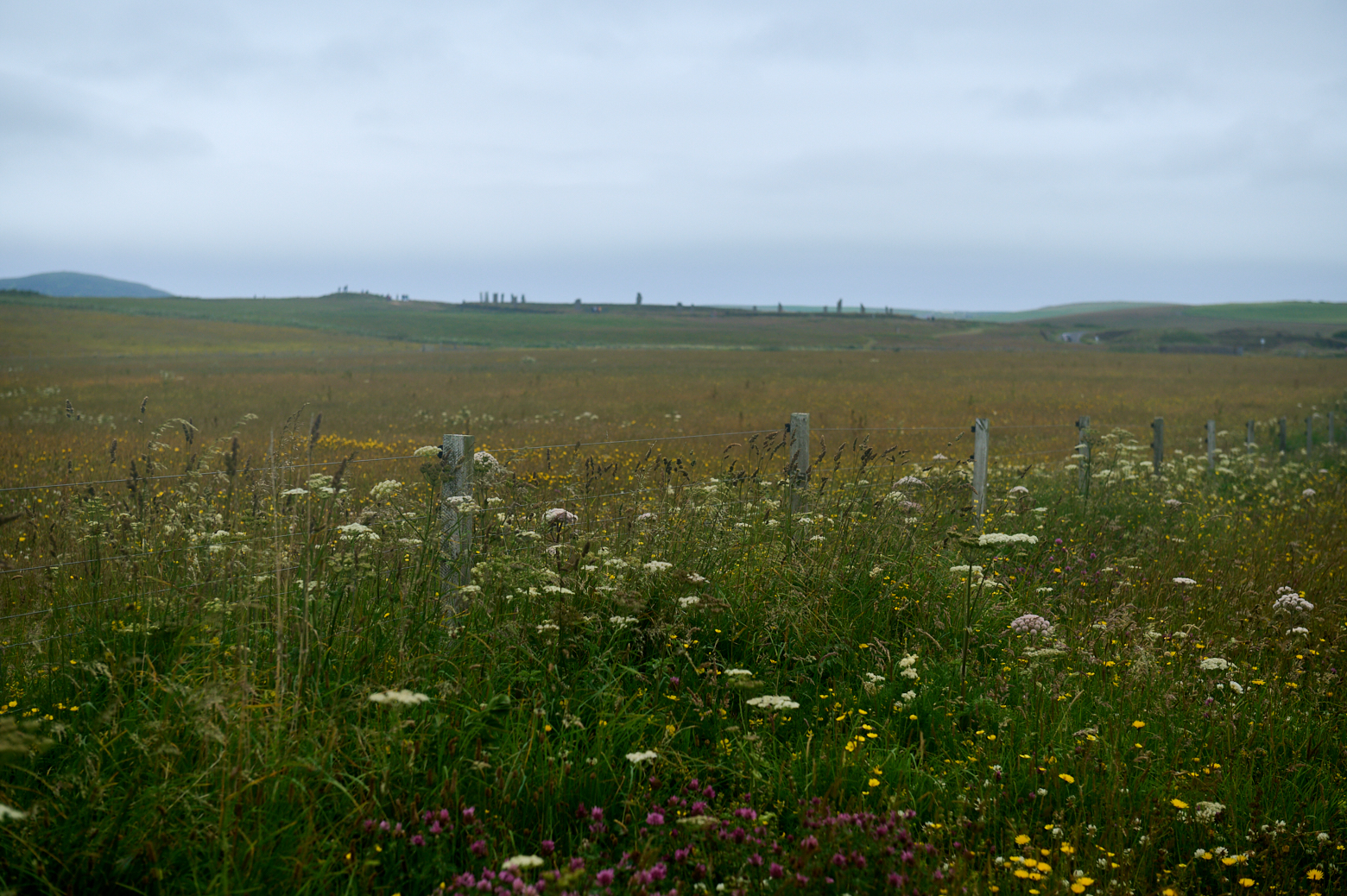
And looking back towards the Ring of Brodgar, all across the meadow.
Ness of brodgar
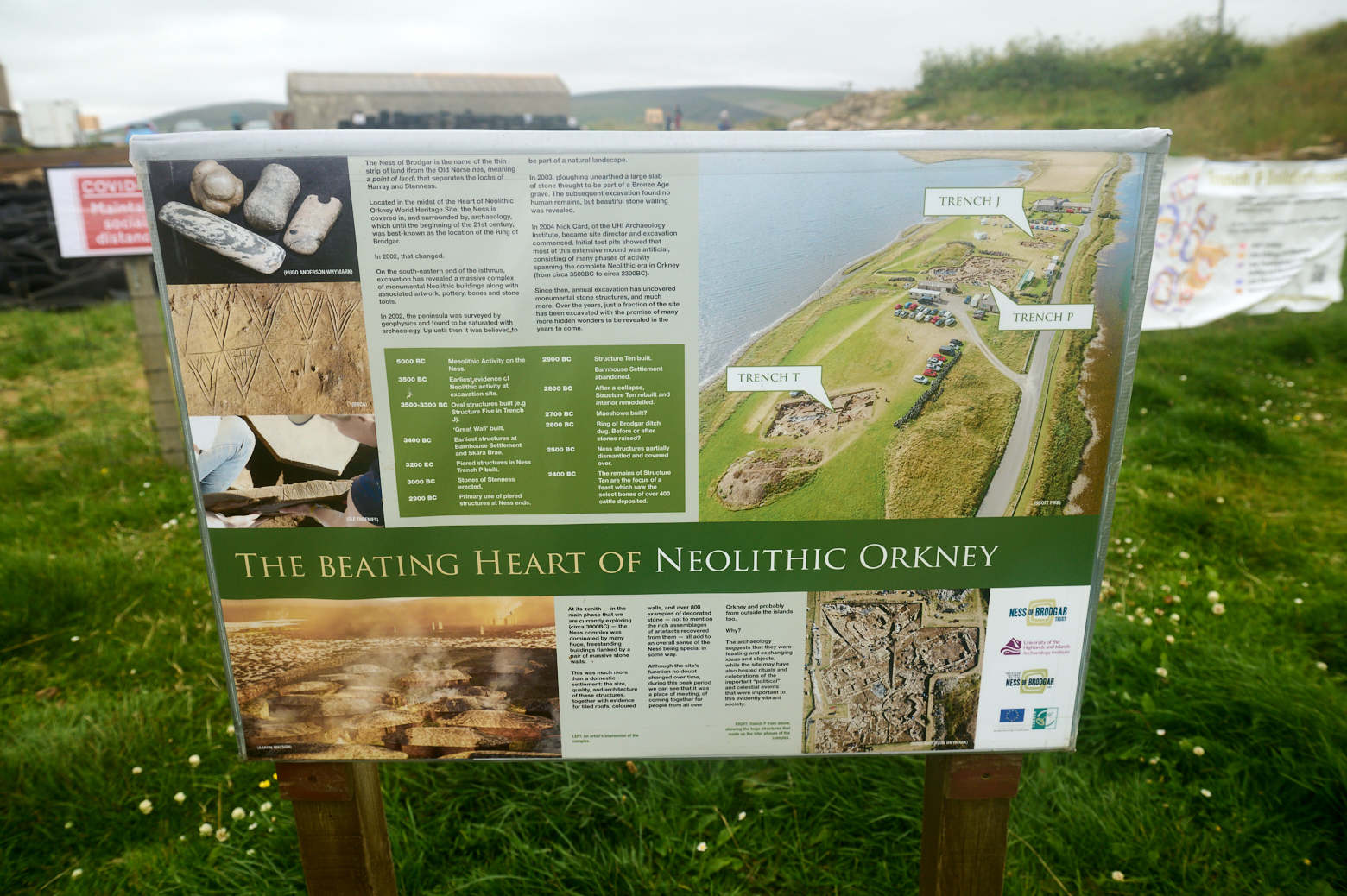
The Ness of Brodgar is a thin strip of land between the lochs of Harray and Stenness.
The Ness is covered in, and surrounded by, archaeology. Until the beginning of this century, it was best known as the site of the Ring of Brodgar and the nearby Standing Stones of Stenness, both part of the Heart of Neolithic Orkney World Heritage Site. In 2002 all that changed when a geophysical survey revealed a huge prehistoric complex, indicating many buildings beneath the Ness. The dense concentration of structures astonished the worldwide archaeological community. (orkney.com)
In 2003 the owners of one of the nearby houses on the Ness of Brodgar wanted to prepare a field for a wildflower meadow.
The ploughman uncovered what looked like the slab of a Bronze Age burial kist, and on inspection, a vast complex of buildings dating as far back as 3300 BC were discovered. (Northlinkferries.com)
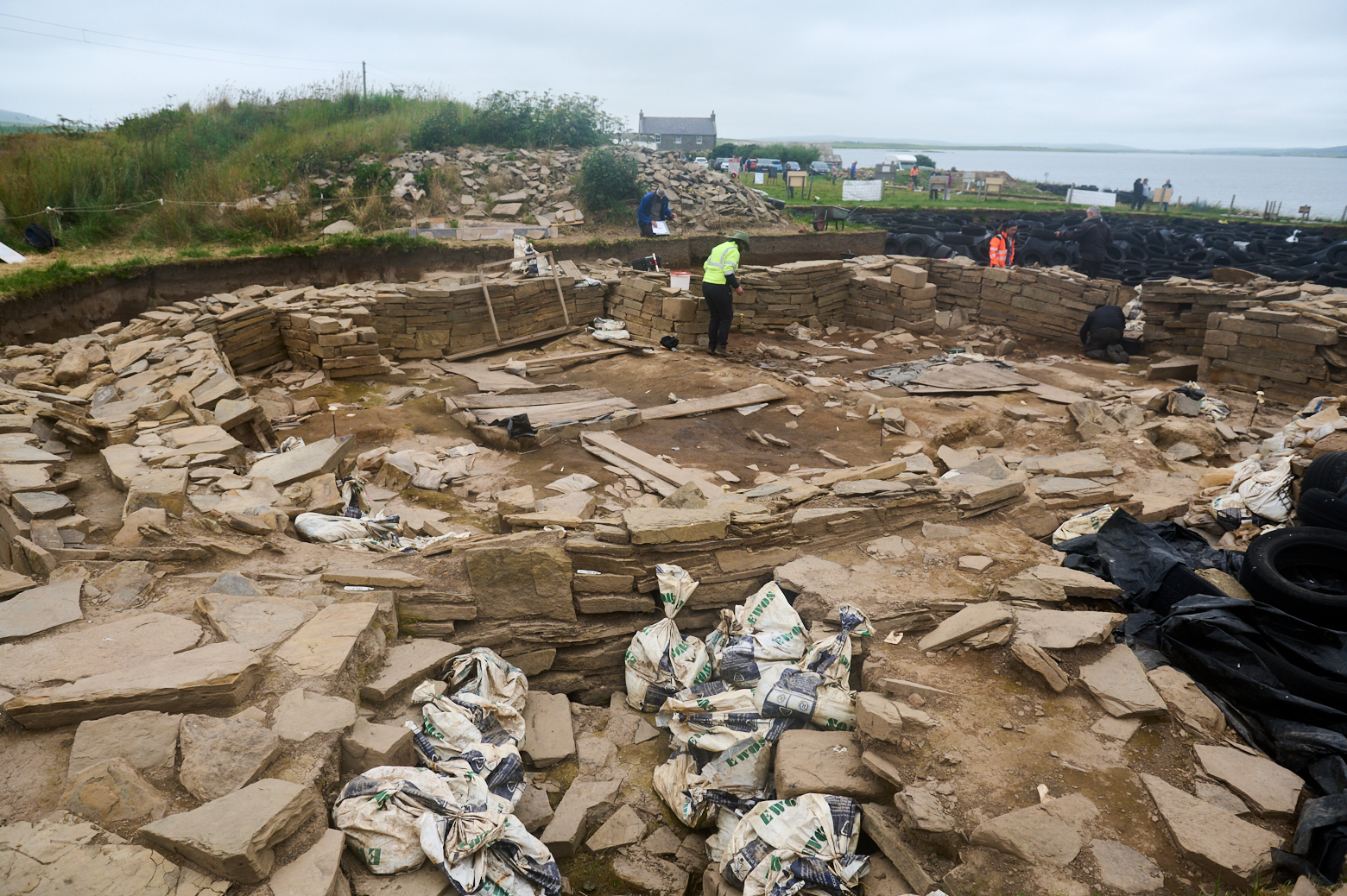
Every summer it is possible to see archaeologists at work at the Ness, revealing a large complex of monumental Neolithic buildings along with decorated masonry, pottery, stone tools, evidence of stone tiled roofing and much more. 2021 a small group was back at work and parts of the excavations were open to taking a peek inside.
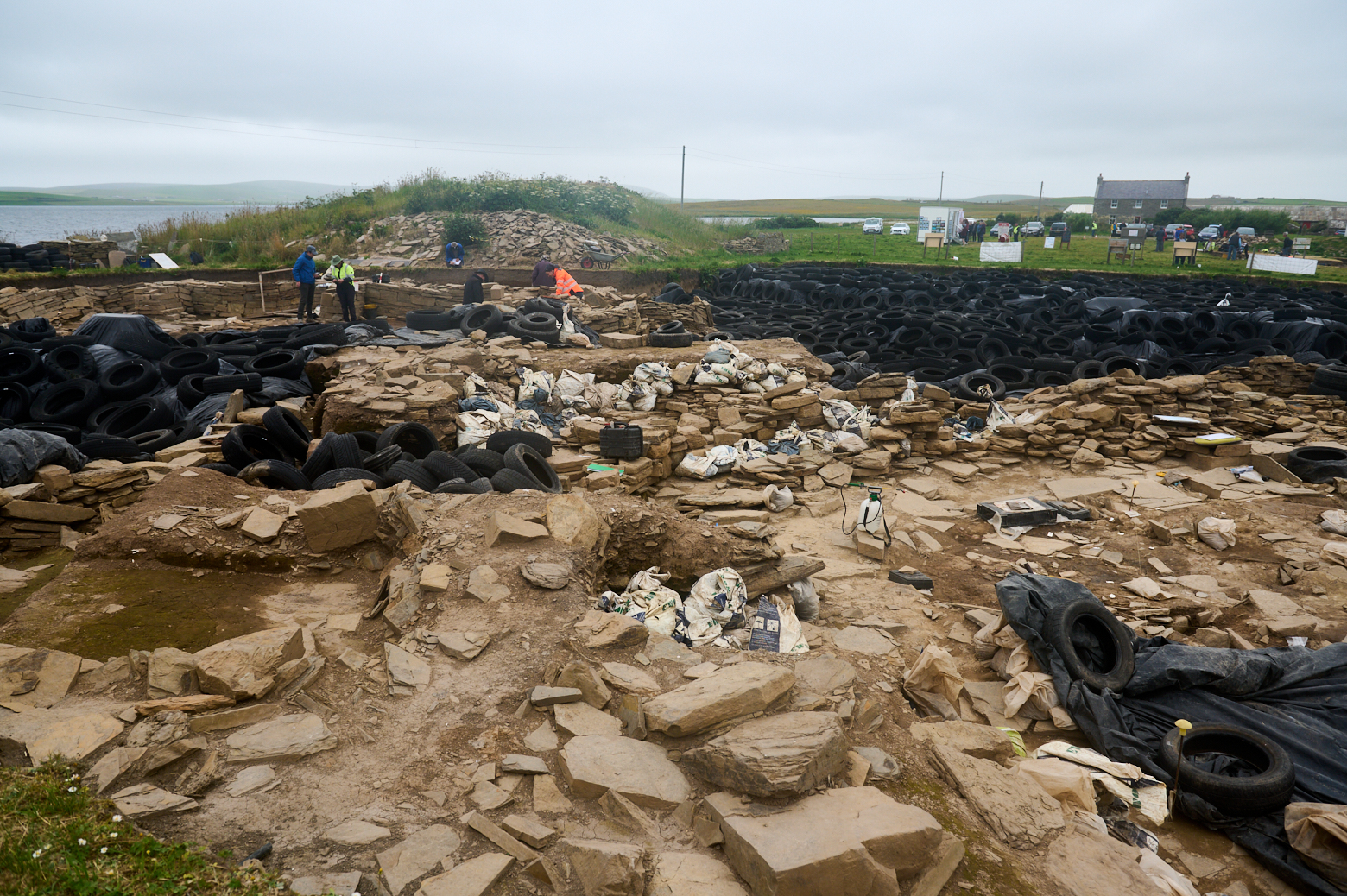
So far a number of buildings, some of them on top of each other have been excavated and all the finds are changing the knowledge about the Neolithic time.
Get to know the structures on the Ness of Brodgar website.
Signs on the site are telling us about the finds and about the history of the place. The Information Panels.
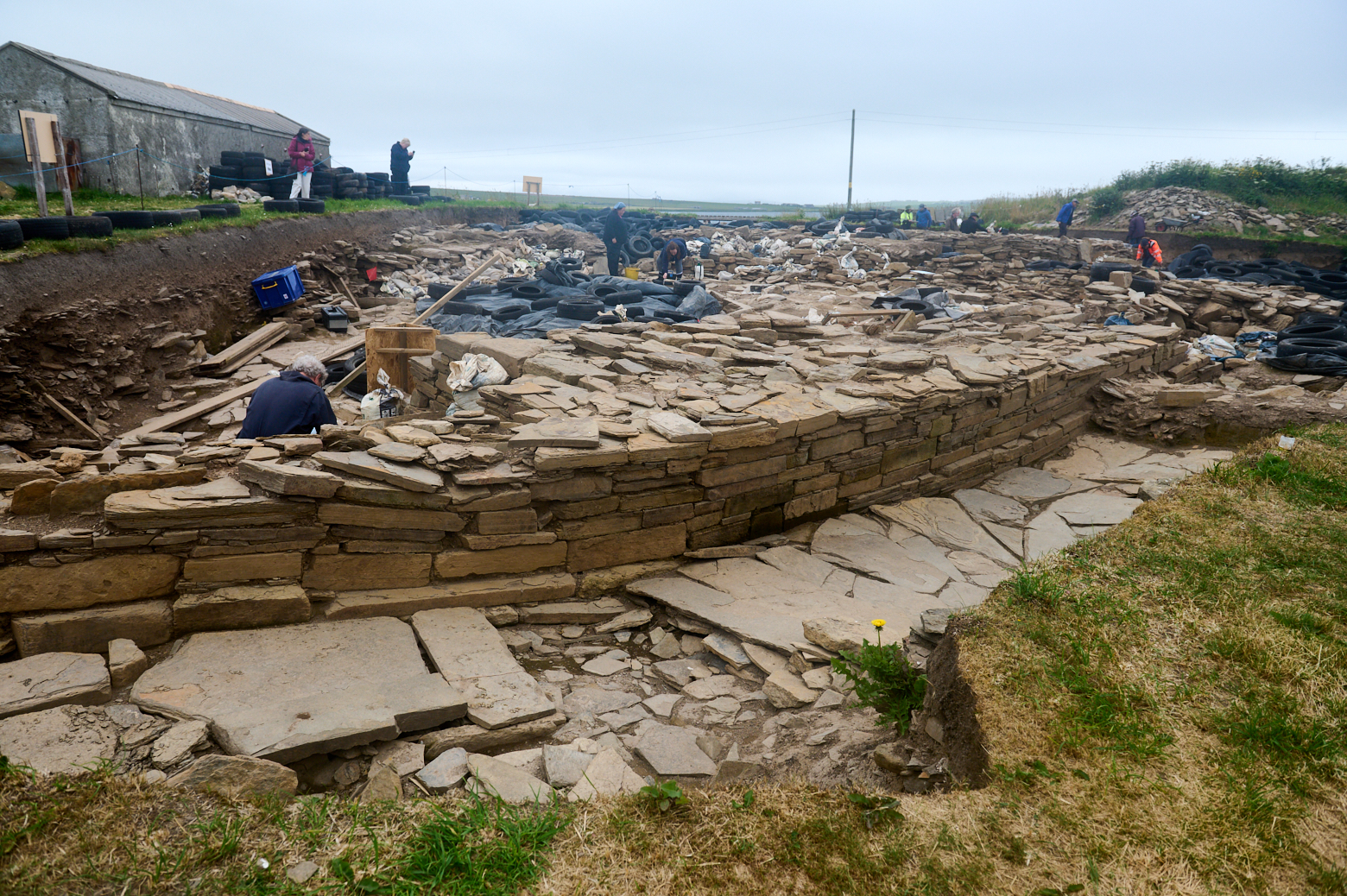
The site was surrounded by a vast boundary wall, sometimes referred to as the Great Wall of Brodgar, wider than Hadrian’s Wall.
Why the Ness of Brodgar was abandoned is unknown. Perhaps a new religion took over or a new power ruled over the islands. However in 2200 BC the Ness of Brodgar was robbed of stone, and then somehow, this vast complex of buildings became lost, covered by dirt and plants, and forgotten in the landscape. (Northlinkferries.com)
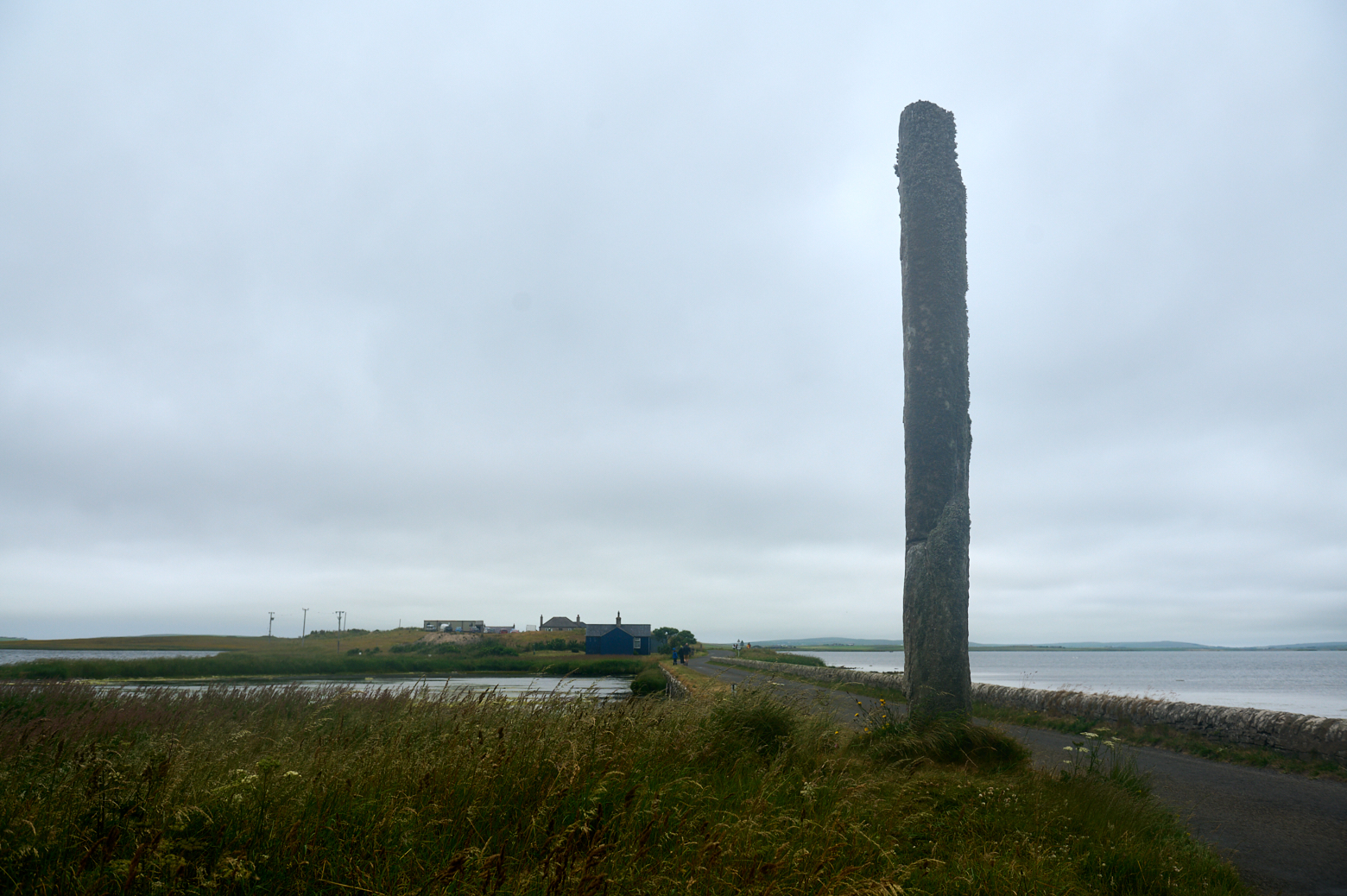
Another view of the Ness is seen from the Watch Stone, near the Stones of Stenness. Before I turned around and walked back to that parking place at the Ring of Brodgar.


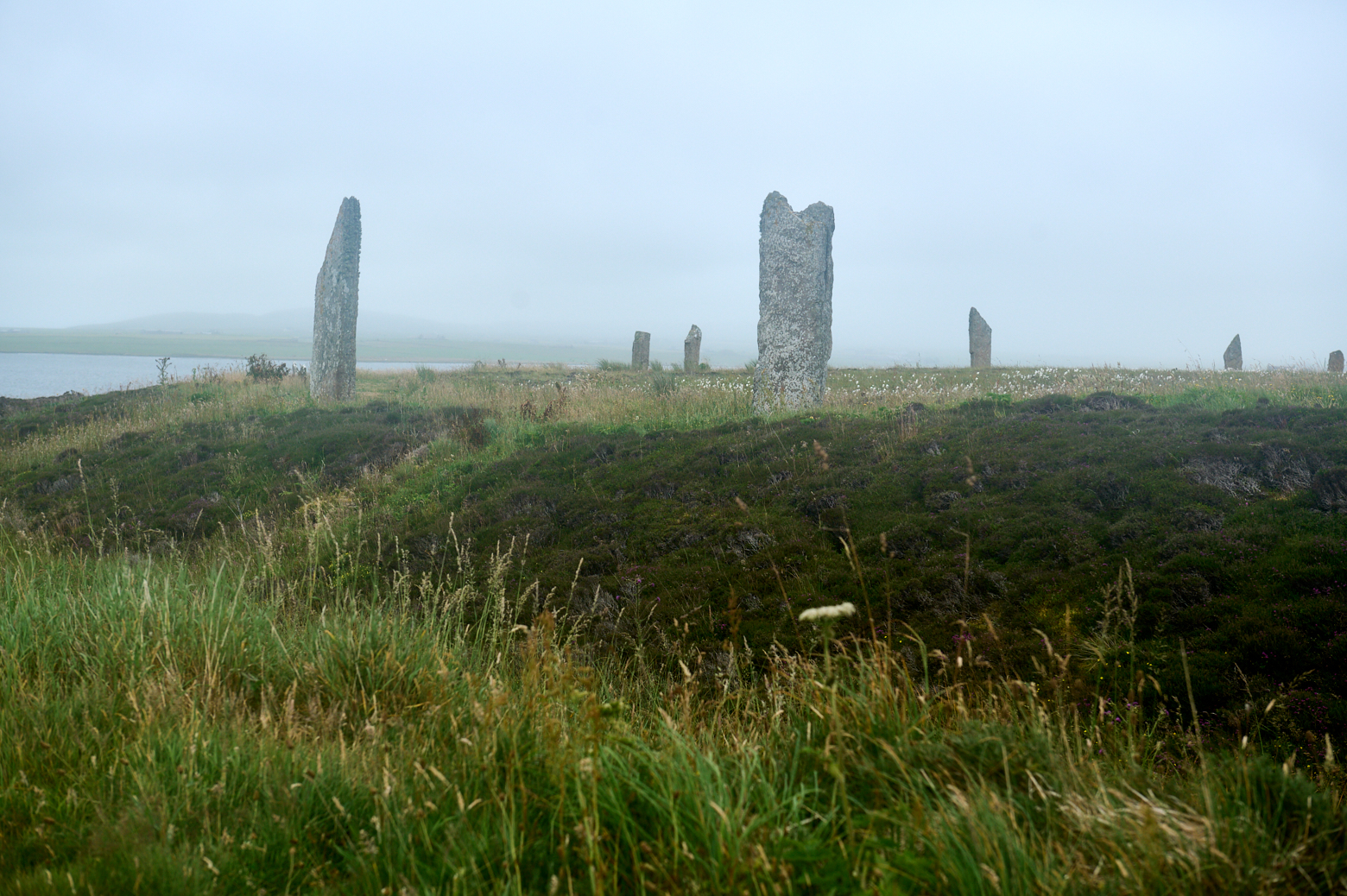

Kirkbuster Museum
On my way back to may little cottage near Skaill I stopped at the Kirkbuster Museum, which was unfortunately closed that day, so I could only take a peek from the outside onto the last “firehoose” in Northern Europe.
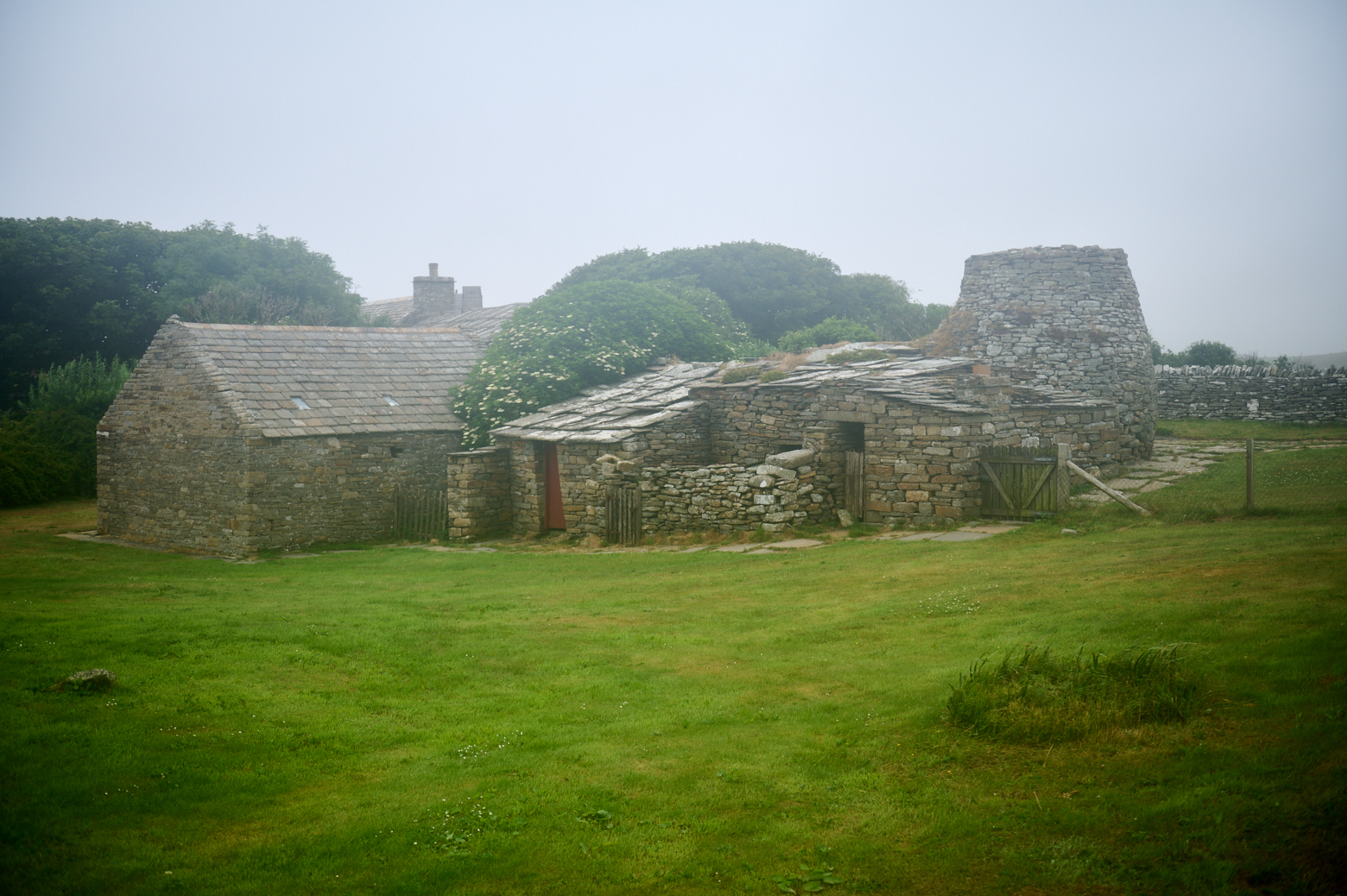
The house has a central hearth, complete with peat fire, and a stone neuk bed reminiscent of the Neolithic interiors that can be seen at sites such as Skara Brae, Orkney. Kirbuster was occupied up until the 1960s (Orkney.gov.uk)

